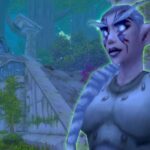Starting university is an exciting chapter, filled with new experiences and opportunities. For those arriving at the University of California, Santa Cruz (UCSC) in 2004, the transition was likely a mix of anticipation and perhaps a little disorientation. This guide aims to provide a glimpse into what new students might have encountered and how they could navigate their freshman year at UCSC in 2004.
Navigating a new campus is one of the first hurdles for any freshman. In 2004, physical maps were essential tools for getting around UCSC. Forget relying solely on smartphone apps; a paper map was your best friend to understand the layout of the campus, from the iconic Quarry Plaza to the various colleges nestled within the redwood forest. Key buildings like McHenry Library, the Science Library, and the Bay Tree Bookstore were crucial landmarks to locate early on. Understanding the campus bus system, the Loop, was also vital for getting between different parts of the sprawling campus, especially if you had classes spread out. Walking and biking were popular options too, given the pedestrian-friendly nature of UCSC and its beautiful surroundings.
UCSC Campus Map in 2004: A visual guide to key locations for new students.
Academically, 2004 was a time of evolving technology in universities. Course registration might have involved a combination of online systems and in-person processes. Students likely used an online portal to browse course catalogs and register for classes, but there could still have been lines and paperwork involved. Familiarizing yourself with the online resources available, such as the university website and any learning management systems, was key. UCSC offered a range of academic resources, including the libraries, tutoring services, and academic advising. Building relationships with professors through office hours was also an important aspect of academic success.
McHenry Library at UCSC in 2004: A central hub for academic resources and study.
Student life in 2004 at UCSC was vibrant and diverse. Housing options ranged from dormitories within the residential colleges to off-campus apartments. Dorm life was a significant part of the freshman experience, offering opportunities to socialize and build community. Campus dining halls and cafes provided meal options, and exploring the local Santa Cruz food scene was also a popular pastime. UCSC had a thriving social scene with numerous clubs, organizations, and events catering to various interests. From student government to environmental groups, arts organizations, and sports clubs, there was something for everyone to get involved in. Attending campus events, exploring downtown Santa Cruz, and participating in outdoor activities like hiking in the redwoods or heading to the beach were common ways to spend free time.
Quarry Plaza at UCSC in 2004: A central meeting point and hub of campus activity.
Essential resources were in place to support students’ well-being and success. The student health center provided medical services, and counseling services offered support for mental health. Career services helped students with career exploration and job preparation. Technology was becoming increasingly important, and UCSC likely had computer labs and internet access available across campus, although perhaps not as ubiquitous as it is today. Campus safety and security were priorities, with campus police and emergency services ensuring a safe environment. Knowing emergency contact numbers and understanding campus safety procedures was important for all students.
UCSC Student Services in 2004: Providing essential support for student life and academics.
Starting at UCSC in 2004 was an exciting time. While this guide offers a glimpse into some key aspects of navigating freshman year, the best way to get oriented was to explore, engage, and ask questions. Embrace the UCSC experience, get involved in campus life, and don’t hesitate to seek out resources and support when needed. Welcome to UCSC!
